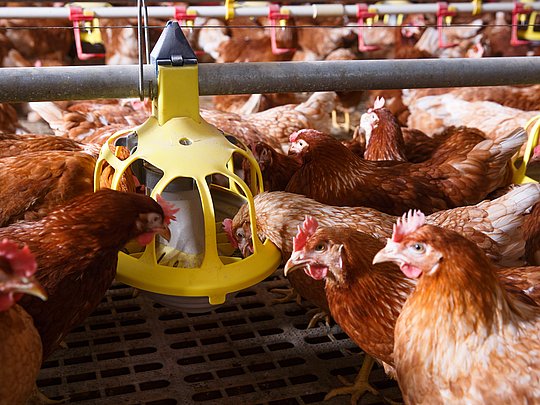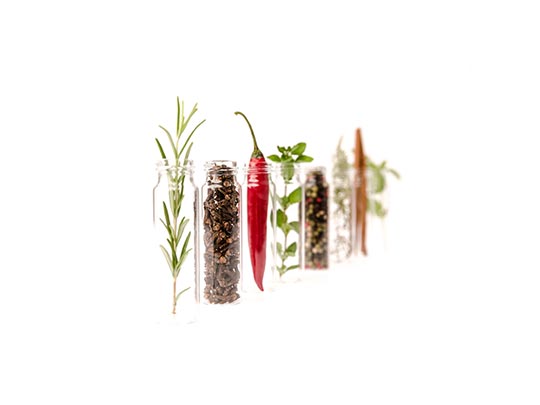Discover more on poultry GUT feeling: Specifics in poultry's gastrointestinal morphology - Part 2
After giving you an insight into poultry's gastrointestinal morphology in part one, we'd like to close this article with some insights about how poultry selects feed and why feed additives like phytogenics are foreseen to have a great future ahead.
Crucial: high digestible feed
Compared with the body weight, small length and volume of intestinal tract require short retention time and high digestible feed. The lack of lactase and only minor saccharase activity lead to restrictions in the use of feedstuff. In the first weeks of life, poultry has worse exploitation of saturated fats in feed, which requires the supply of mainly plant-derived unsaturated fatty acids. Finally, as the microbial digestion capacities in blind guts are relatively low, cell wall compounds are hardly utilized, leading to supplementing vitamin B complex needs.
Got the look?
Poultry primarily selects feed, especially according to shape, color, size, and texture of particles, showing that optical and tactile attraction appear more critical than palatability. Chickens see colors best in the red to the yellow range, while in the blue-violet spectrum, vision is minimal. Many manufacturers take advantage of this, as it's not without reason that feeders and drinkers are usually colored red.
This "preference" for red is not always beneficial, as small bleedings on the plumage or cloaca carry the risk of being extensively picked at by the birds. If stocking density is very high and farming is non-stimulating, this can quickly lead to serious cannibalism problems.
Did you know?
Through the numerous "tactile corpuscles," the chicken can perceive the shape, size, consistency, and surface texture of feed. Feed particles with a size and structure similar to cereal grains and grit for crushing the swallowed cereal grains in the gizzard are preferred. Consequently, a widely homogenous particle size of all components must be ensured to avoid the selectivity of single particles of complete rations in powdered form.
A sophisticated morphology of poultry requires an optimal supply of nutrients

Given this background information, it's getting even more explicit that, next to optimal housing conditions, resilient health status, and low-stress levels, high-quality feed is of utmost importance to ensure that birds can fully exploit their genetic performance potential.
To meet the nutritional needs of animals, one takes advantage of the favorable properties of numerous feed additives available. Feed additives have been playing a significant role since time immemorial. To positively influence animal production, performance, or welfare, mainly by affecting the gastrointestinal flora or the digestibility of feedstuffs, is only one out of several reasons for their use.
Since the ban on antibiotic growth promoters trend in several markets, the interest in developing effective alternative feed additives has enormously increased. Even better, if these alternatives are based on plants, thus fully benefiting from the synergistic effects of all bioactive substances involved.
Sounds great? It is great.

Phytogenics are high-quality plant-based feed additives and an expression of the present and the future, are on the rise, as many of their beneficial effects on animals have been proven in vitro and in vivo. Their potential to replace in-feed antibiotics is of great interest in the feed industry and among consumers of today and tomorrow.
If you want to learn more about these natural feed additives and their broad spectrum of activity, visit our website or browse our many articles here on the blog.

Elisabeth Rohrer
After her study in agriculture sciences at the university of natural resources and life sciences in Vienna, Elisabeth joined the Delacon team in December 2013 as Technical Communications Manager - a position, she always exerted with pleasure. Since 2021, her task areas have been extended and thus, she is also supporting colleagues in writing offside the technical focus as Content Manager. Elisabeth describes herself as a great animal and nature lover and prefers to spend her free time high up in the mountains with her little family, away from the hustle and bustle.










